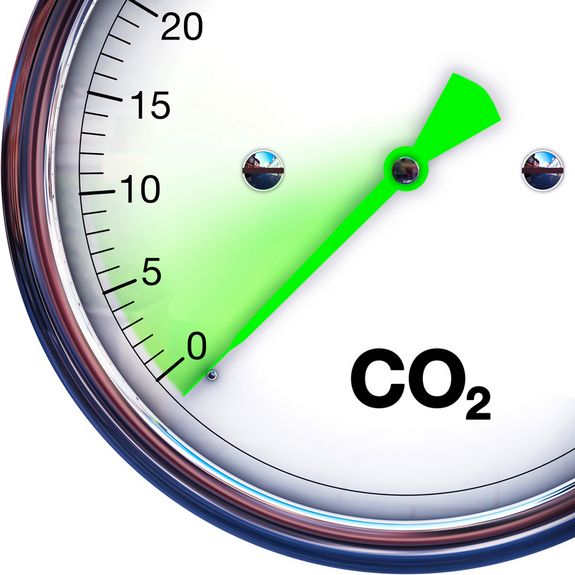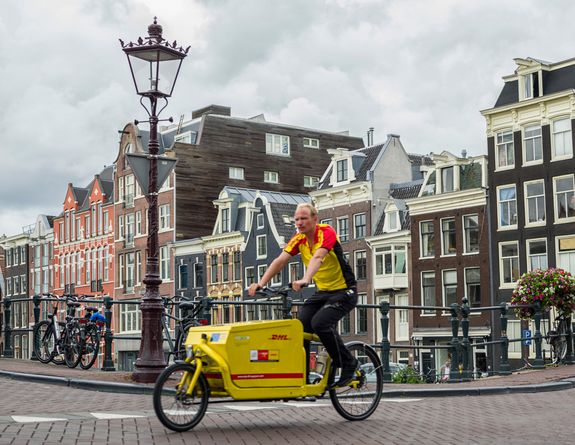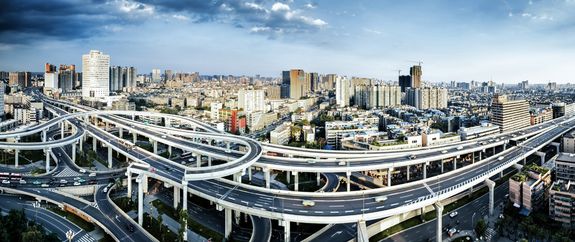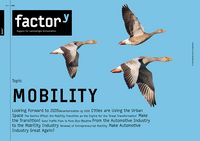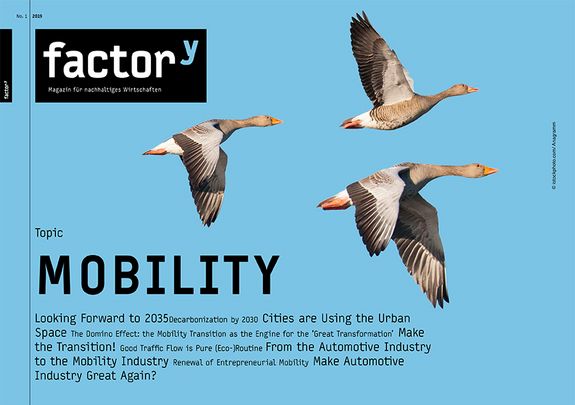Mobility
Looking Forward to 2035
Isn’t mobility in Germany just great nowadays? While it was formerly a tricky matter to have meetings regularly with your co-workers, I can now travel to the country’s furthest corners with an autonomous bus — and return even late at night. Depending on the weather and the amount of time I have, I can also choose to use the e-bike sharing system. In a pinch I can take an e-convertible. And thanks to maintenance by Audi, Benz and co., everything is in excellent condition.
EV charging stations are almost everywhere and the batteries can also be quickly changed. However, depending on your mood, the best part is to be driven around while reading a book or chatting. The public transportation system is well connected and perfectly coordinated, even the spoiled Swiss praise us. There is almost no wait and if there were, then there is good relief, because everything proceeds nearly too smoothly.
Only few vehicles still exist and these are less than a quarter of the five million that existed in 2019. The air in the cities is clean. Instead of traffic noise you can hear the birds singing in fruit trees at the curb of single-lane ring roads, which function as shady bikeways, and former parking lots are now green parks.
On the last mile to the customer, the suppliers distribute their products on freight bikes. Electric trucks supply the urban logistics hubs. Overall, the distance between producer and consumer is shorter nowadays, because local production has been increasing. We move fast, thanks to streetcars, buses, and bicycles. As mentioned, the transportation system goes as far as the periphery, bike sharing systems are everywhere, and many of us walk more often.
The freeways are mainly used for long-distance travel and 80 percent of them are electrified through overhead contact lines, which power electric trucks. Then the trucks drive the remaining distance fueled by ecofriendly synthetic fuels. Almost half of the goods are transported by means of an expanded rail transport system and waterways. Most of us prefer to use the train or an electric bus. In the countryside, cars which are electrically powered are usually used.
Only 43 percent actually own an e-car. It does not longer serve to enhance one’s prestige. The ‘electric smile’, which appears on your face the first time you drive an e-car, is a common experience. The electric engine’s acceleration mesmerizes everyone. We get our speed rush at events like the Formula E, eSports, and in bike parks. Roaring engines are frowned upon and electric ones are a must-have.
Mobility in 2035 — no longer a necessity, but wellness, fitness, and even entertainment are. The days of traffic jams, searching for parking lots, and train cancellations are over. The number of accidents has decreased by 80 percent. The transport sector achieved its climate goals, advanced the electrification and the energy transition, shut down the last coal-fired power plants, and in place of former brown coal districts, battery factories and research centers were established. The German automotive industry builds almost exclusively e-cars as well as practices mobility services and with that it makes sales worldwide. Transformation is a German word now.
How did all of this happen, what only a few dared to believe in 2019? You will find the prescriptions in this issue of factory. We wish you pleasant reading.
Ralf Bindel and the factory team
More articles on the topic of mobility and transport transition you will find in our correspondent factory-magazine Mobility. This you can download free of costs and it is pleasantly readable on screens and tablet-computers. As every time it is also nicely illustrated and contains all articles in the compact tablet-format plus appropriate numbers and citations. Online in our topics section a few articles are also available – there you can comment and rate them.
Themen
- The Domino Effect: the Mobility Transition as an Engine for the ‘Great Transformation’
- Cities Use the Space
- Decarbonization by 2030
- The fear of biting the hand that feeds you
- Where investing is a pleasure
- Why divestment is going to change the world
- A Robin Hood tax for climate protection
- May the Force Be with Us
- Modern Strategies
- The prerogative of interpreting the future now lies with the companies involved in climate protection”
- From Negotiating to Trading Equitably
- Can a donkey be tragic?
- Rethink rather than rebound: a sufficiency revolution must precede the efficiency revolution
- On Rebound, Prebound and Performance Gaps
- So Let Us Seize Power Then!
- With Common Property Against Political Failure
- So Let Us Seize Power Then!
- The Comforting Beauty of Failure
- “It Is Not Impossible at All.“
- Resource-light shopping
- Men Have Not Stopped Giving the Advantage to Women – So Far
- Toothpaste for Princesses and Soup for Pirates
- It is about equality
- A nice day
- Initiative instead of frustration
- The right ingredients
- Resilient for Life
- Not only, but also
- Appreciation – more please!
- Worth more than money
- Learning to value the value of goods
- Worth and Values
- The Transformative Power of Science
- Historically effective: How innovation and technology transform
- The Disappearance of Products
- Growing Older 101
- Columbus’ Egg
- It Works! In Theory at Least ...
- What If...?
- Analysing Separately – Thinking and Acting Together!
- Let’s Break Away from Determined Breaking Points
- More Gold in Waste than in Mines
- The art of separation
- Should you really DIY?
- The Aesthetics of Do-It-Yourself
- Standing on One’s Own Feet
- From the handaxe to desktop fabrication
- Using Shares to Survive the Crisis
- When Citizens participate
- Possess to Participate
- The Right Growth at the Right Time
- Gunter Pauli and Blue Economy
- When Sustainability Grows
- How we treat Growth
- Illusions about Growth

